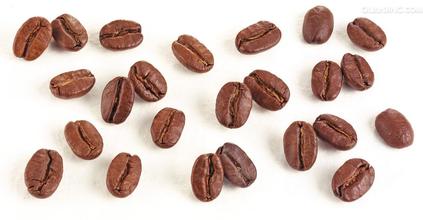The influence of the altitude of coffee beans introduction to the quality of graded coffee flavor description treatment
The influence of coffee beans on altitude
Coffee beans grown at high elevations are hard, dense and have the potential to give full play to their special flavor. The really amazing coffees are grown between 4000 and 6000 feet above sea level, and these beans are picked carefully only during the mature season. Coffee in Central America is rated according to the altitude at which it grows. For example, SHB (Strictly Hard Bean) is the term for Guatemalan coffee beans, indicating that coffee grows above 4500 feet. Mexico is called Altura, which means "high" in Spanish, indicating that it is high-altitude coffee; Papua New Guinea adds the name "Mile High" to mark coffee beans grown in the highlands and mountains.
In the tropics, high altitude provides ideal conditions for coffee to grow:
Moderate rainfall, frost-free climate with an average annual average of 15-21 degrees, but also because the temperature is low and is often surrounded by clouds and fog, so there is less sunshine
In the environment with lower temperature, coffee grows more slowly at higher elevations, and coffee trees absorb soil moisture during the growing period.
The more points, the fuller and bigger the coffee fruit, the harder the beans, and the taste is naturally richer and sweeter.
In addition, the leaf shape of coffee trees in areas with low temperature is larger than that in areas with high temperature, and the photosynthetic effect of large leaves is better than that of small leaves.
Strong, the leaves of coffee trees at high altitude are large, dark green in color and thick in wax. Due to little change in temperature throughout the year, the leaves become smaller in summer.
The chance is small, and the nutrients produced by strong leaves can be adequately supplied to the fruit, and when the nutrients are sufficient, the color is biased.
Dark blue and dark green, after we bake the aroma will be rich and sufficient.
Many people are saying that although this is not absolute, the aroma of coffee beans is higher because of such an environment.
The flavor can also highlight and better play the complex and subtle taste.

Important Notice :
前街咖啡 FrontStreet Coffee has moved to new addredd:
FrontStreet Coffee Address: 315,Donghua East Road,GuangZhou
Tel:020 38364473
- Prev

Jasmine fragrant coffee bean flavor description treatment quality characteristics of taste manor introduction
Jasmine Flavor Coffee Bean Flavor description treatment quality characteristics the manor introduces that the coffee fruit contains two seeds, namely coffee beans. The two beans are connected face to face with each other on one side of the plane. Each coffee bean has a thin outer film, which is called silver skin, and its outer layer is covered with a yellow outer skin, called endocarp. The whole coffee beans are wrapped.
- Next

Introduction to the quality of coffee bean berry treatment method, taste and flavor description method
Coffee treatment quality introduction semi-washing method, also known as honey treatment, is a compromise between drying and washing, eliminating the need for water-washing to ferment the coffee fruit. Harvesting and storage tank (removal of impurities and impurities) pulp removal machine (removal of pulp and impurities) washing pool (selection of light and hard beans) sun field (or dryer) sheller (removal
Related
- Guji coffee producing area of Guji, Ethiopia: Humbela, Shakiso, Wulaga
- What is the most expensive variety of Qiloso in BOP multi-variety group?
- How to store the coffee beans bought home?
- Why are Yemeni coffee beans so rare now?
- Ethiopian Sidamo all Red Fruit Sun Sun Santa Vini Coffee beans
- SOE is mostly sour? What does it mean? Is it a single bean? what's the difference between it and Italian blending?
- Is Italian coffee beans suitable for making hand-brewed coffee?
- How to choose coffee beans when making cold coffee? What kind of coffee beans are suitable for making cold coffee?
- Just entered the pit to make coffee, what kind of coffee beans should be chosen?
- Can only Japan buy real Blue Mountain Coffee? What are authentic Jamaican Blue Mountain coffee beans?

